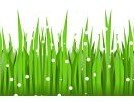Maintaining a lush, healthy lawn during the scorching heat of summer requires careful attention and specialized care. As the blazing sun beats down upon your lawn, it is crucial to implement effective techniques to ensure its vitality and resilience. From proper watering techniques to regular mowing schedules, this article will guide you through the intricate process of summer lawn care, equipping you with the knowledge and strategies necessary to nurture a flourishing green carpet that will make your neighbors envious.
Watering Your Lawn
Proper watering is essential for maintaining a healthy and vibrant lawn during the summer months. Determining the right watering schedule is crucial to ensure that your lawn receives the right amount of moisture without overwatering or underwatering.
Determining the Right Watering Schedule
The frequency and duration of watering your lawn will depend on various factors such as weather conditions, grass type, soil type, and overall lawn health. Generally, it is recommended to water your lawn deeply and infrequently rather than shallowly and frequently. Deep watering encourages deeper root growth and makes your lawn more resilient to drought conditions.
To determine the right watering schedule, consider the following guidelines:
-
Grass Type: Different grass types have different watering needs. Cool-season grasses typically require more frequent watering, while warm-season grasses are more drought-tolerant and require less frequent watering.
-
Soil Type: Sandy soils drain water more quickly and may require more frequent watering, whereas clay soils retain water for longer periods and may require less frequent watering.
-
Weather Conditions: Adjust your watering schedule based on the current weather conditions. If there has been significant rainfall, you may need to reduce or skip watering.
-
Watering Depth: Water your lawn deeply to encourage root growth. Aim for at least 6 inches of penetration into the soil.
Using the Proper Watering Techniques
Proper watering techniques play a crucial role in maximizing the effectiveness of your watering efforts. Follow these recommendations to ensure that your lawn receives sufficient water:
-
Water in the Morning: Watering your lawn early in the morning allows the grass blades to dry before evening, reducing the risk of fungal diseases.
-
Use a Sprinkler or Irrigation System: Use a sprinkler or irrigation system that distributes water evenly across your lawn. Avoid using handheld hoses, as they result in uneven watering patterns.
-
Water Evenly: Ensure that water is distributed evenly across the entire lawn to prevent overwatering or underwatering certain areas.
-
Measure Watering Time: Use a rain gauge or empty cans placed around your lawn to measure the amount of water applied during each watering session. This will help you determine the appropriate watering duration for your lawn.
-
Monitor Soil Moisture: Regularly check the moisture level of your soil to ensure you are providing adequate water. Stick a screwdriver or a soil moisture probe into the ground to determine if watering is necessary.
Avoiding Overwatering and Underwatering
Overwatering or underwatering your lawn can have detrimental effects on its health. It is important to strike the right balance and avoid both extremes.
Overwatering your lawn can lead to shallow root growth, increased vulnerability to diseases, and wasted water. Signs of overwatering include constantly soaked soil, moss or algae growth, and an increase in weeds. To prevent overwatering, ensure that your lawn receives enough water to penetrate the root zone but does not remain saturated.
Underwatering, on the other hand, can result in shallow root growth, brown and dry patches, and increased susceptibility to stress and damage. Signs of underwatering include wilting and dull grayish-green color of the grass blades. To prevent underwatering, monitor your lawn’s moisture levels and adjust your watering schedule accordingly.
By following the right watering schedule, using proper techniques, and avoiding overwatering or underwatering, you can ensure that your lawn remains healthy and vibrant throughout the summer.

Mowing Your Lawn
Maintaining the proper height of your grass and adhering to a regular mowing schedule are key factors in achieving a lush and well-manicured lawn during the summer months.
Choosing the Right Mower Height
The height at which you mow your grass significantly impacts its health and appearance. Different grass types have varying recommended mowing heights. Generally, it is advisable to mow your grass at a higher setting during the summer to promote healthier root growth, better weed suppression, and increased drought tolerance.
Here are some general guidelines for selecting the right mower height:
-
Cool-Season Grasses: For cool-season grasses like Kentucky bluegrass, fine fescue, and perennial ryegrass, set your mower height between 2.5 to 3.5 inches during the summer months.
-
Warm-Season Grasses: Warm-season grasses such as Bermuda grass, St. Augustine grass, and Zoysia grass can be mowed at a slightly lower height, ranging from 1.5 to 2.5 inches.
-
Transition Zone Grasses: If you have grass in the transition zone, which experiences a mix of cool and warm seasons, aim for a mower height between 2 to 3 inches.
Mowing Frequency in Summer
Establishing a regular mowing schedule is essential in maintaining a healthy lawn during the summer. By following a consistent mowing routine, you can promote proper growth and discourage weeds.
The frequency at which you should mow your lawn will depend on the growth rate of your grass. As a general guideline, aim to mow cool-season grasses every 7 to 10 days during the summer, while warm-season grasses may require mowing more frequently, typically every 5 to 7 days.
Keep in mind that you should never remove more than one-third of the grass blade during a single mowing session. Cutting more than this can stress the grass and inhibit healthy growth.
Mulching vs. Bagging Grass Clippings
Deciding whether to mulch or bag your grass clippings is an important consideration in lawn care. Both methods have their benefits and can contribute to the overall health of your lawn.
Mulching involves cutting the grass into fine pieces and allowing it to fall back onto the lawn. This method has several advantages:
-
Nutrient Recycling: Mulched grass clippings release valuable nutrients back into the soil, acting as a natural fertilizer for your lawn.
-
Moisture Retention: Mulch helps to retain moisture in the soil, reducing the need for excessive watering.
-
Weed Suppression: Mulch acts as a natural barrier, preventing weed seeds from germinating and growing.
Bagging involves collecting and removing the grass clippings from your lawn. Although it requires more effort, bagging can be beneficial in certain situations:
-
Excessive Grass Growth: If your lawn has experienced rapid growth due to excessive rainfall or other factors, bagging the clippings can prevent them from smothering the grass.
-
Weed Control: Bagging can help eliminate weed seeds that may have already established on your lawn, preventing further weed growth.
Ultimately, the choice between mulching and bagging grass clippings depends on your personal preference and the specific needs of your lawn. Both methods can contribute to a healthy and well-maintained lawn during the summer.


